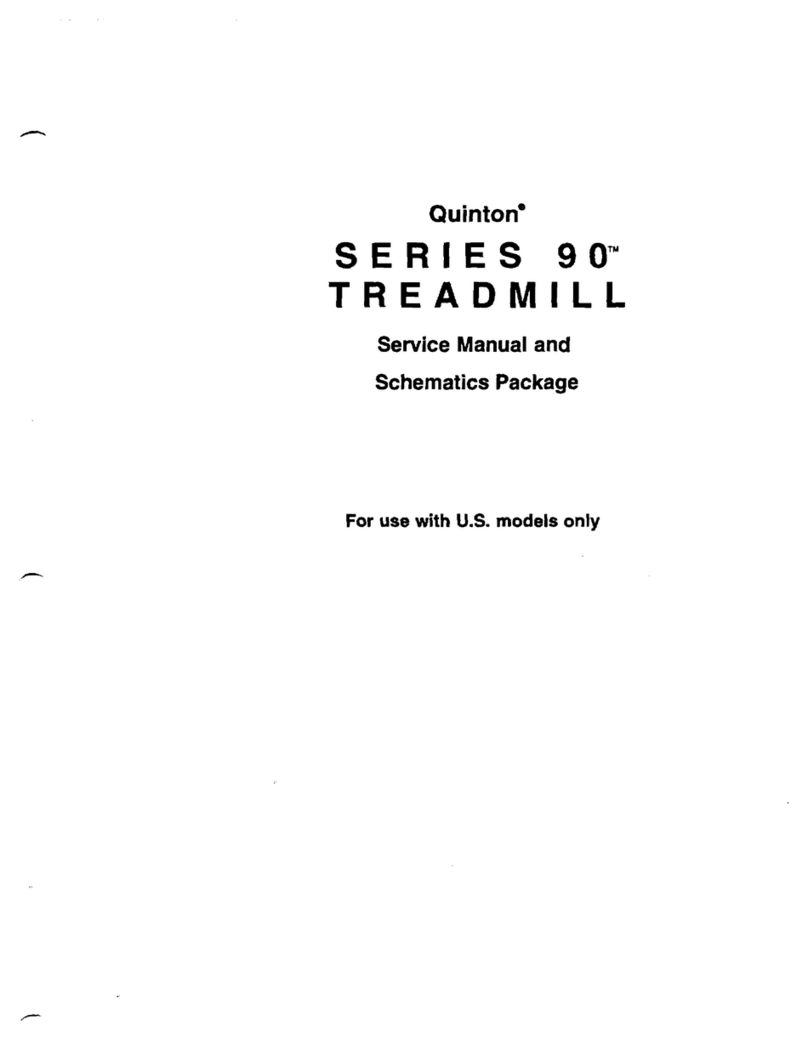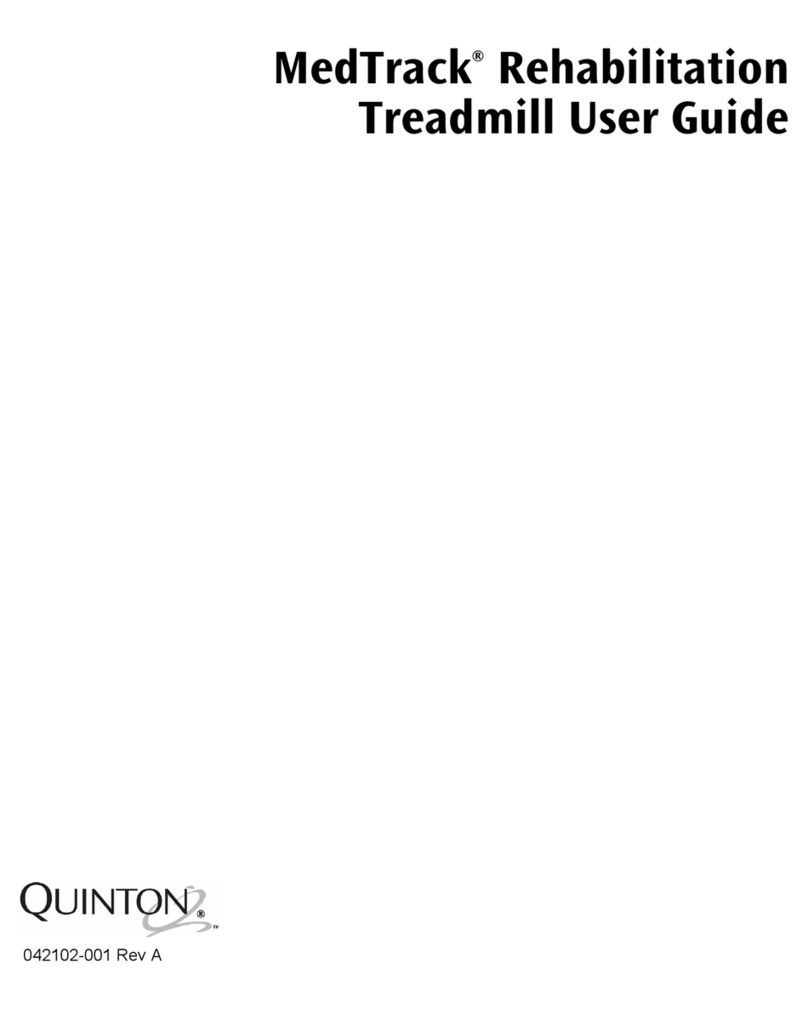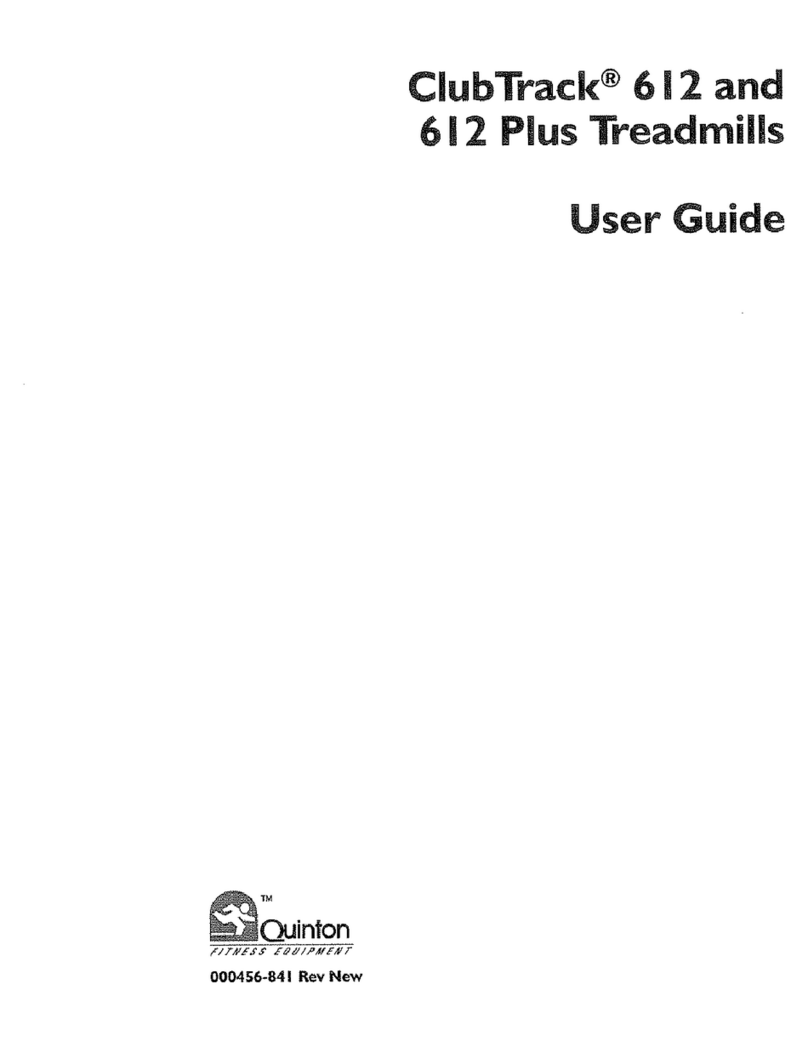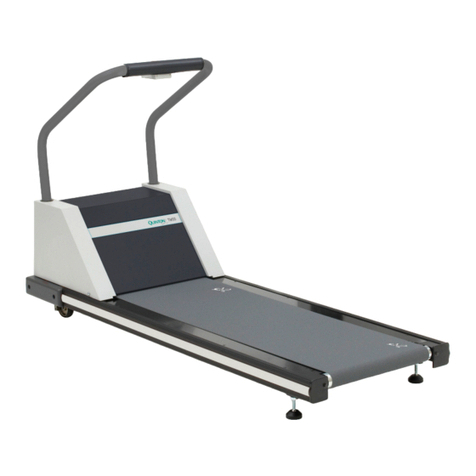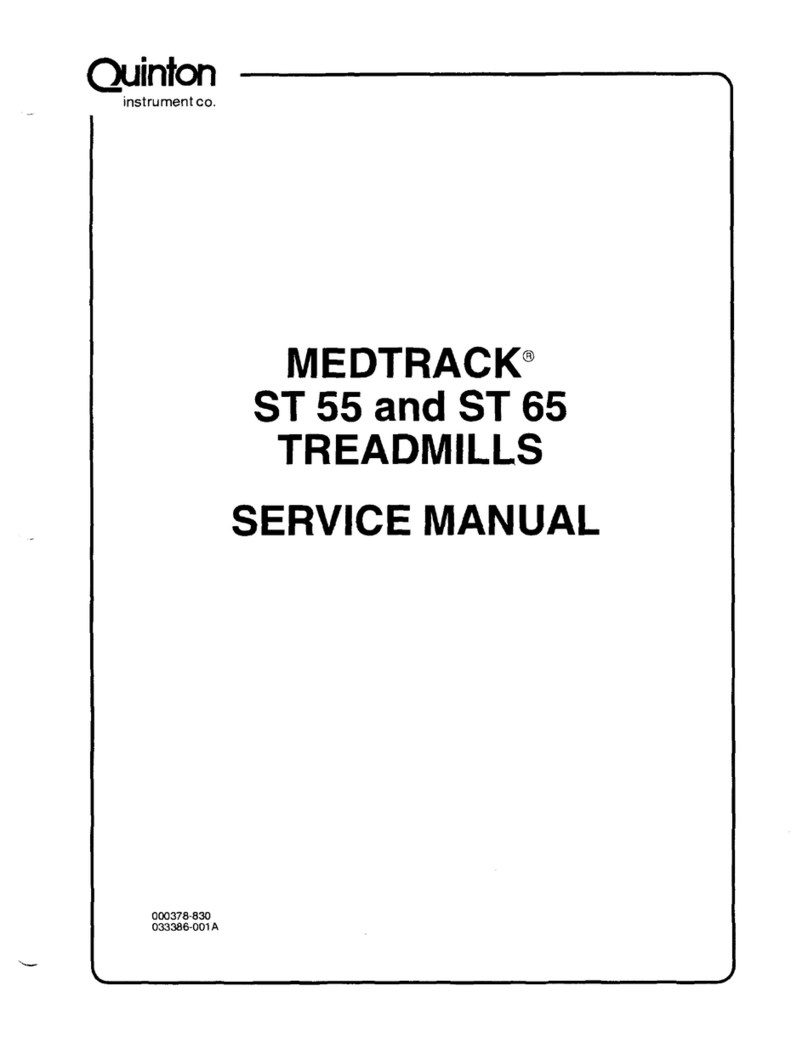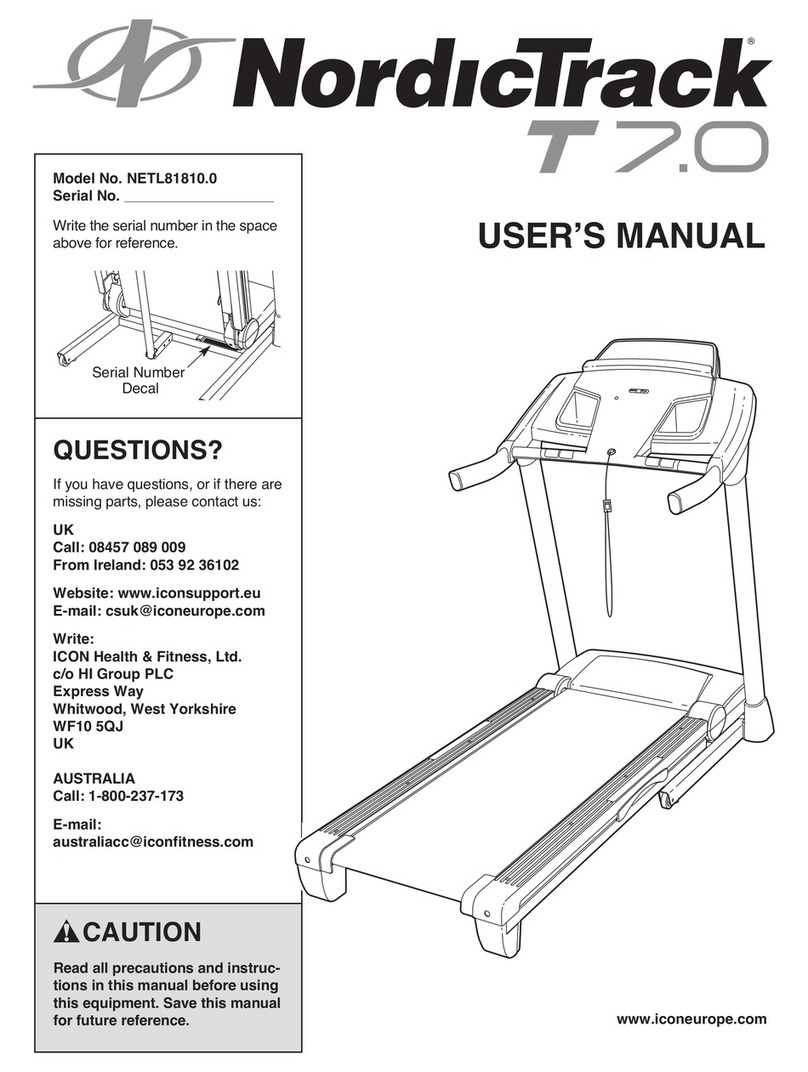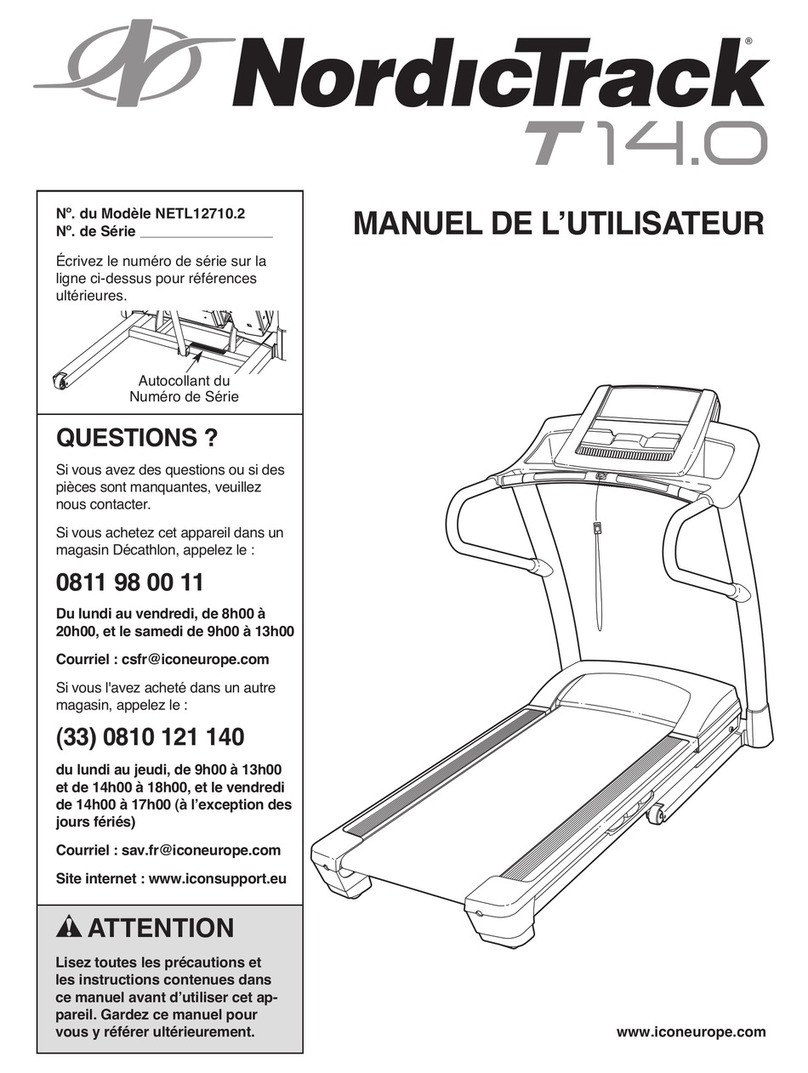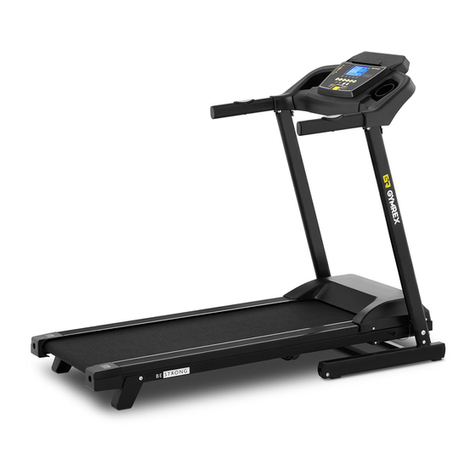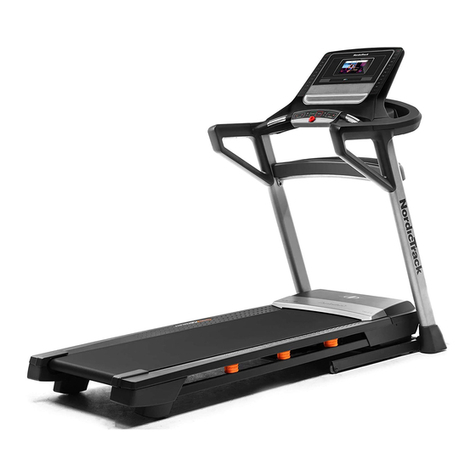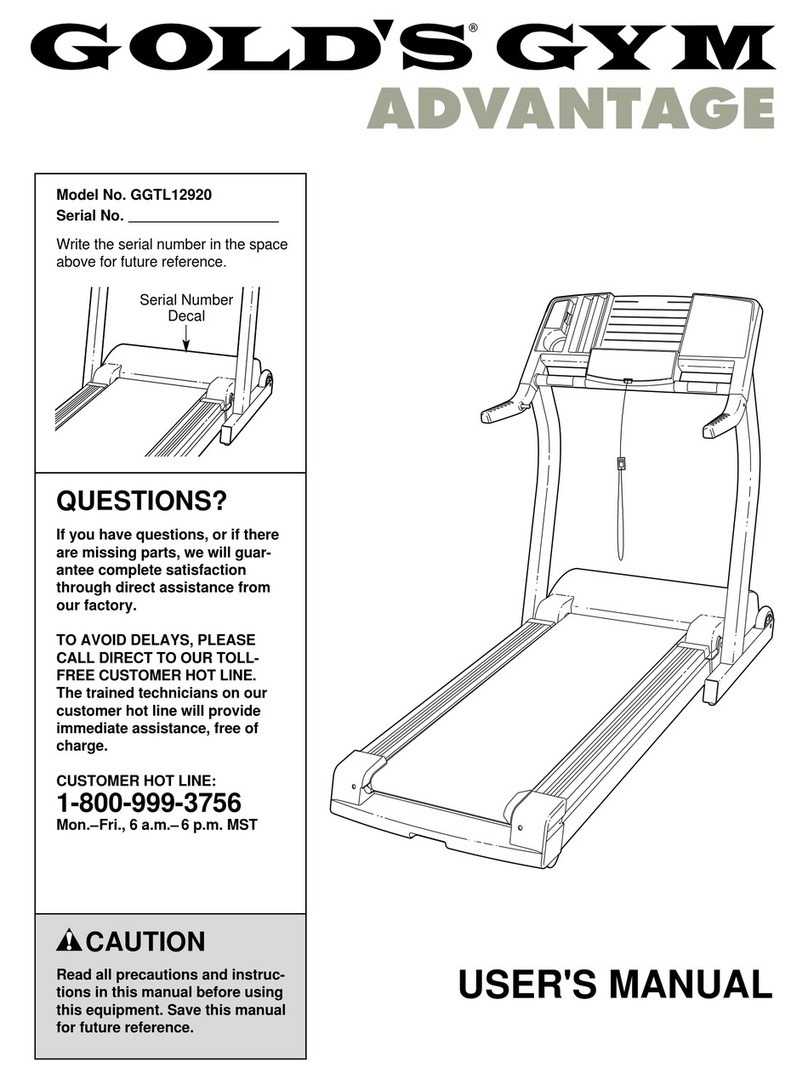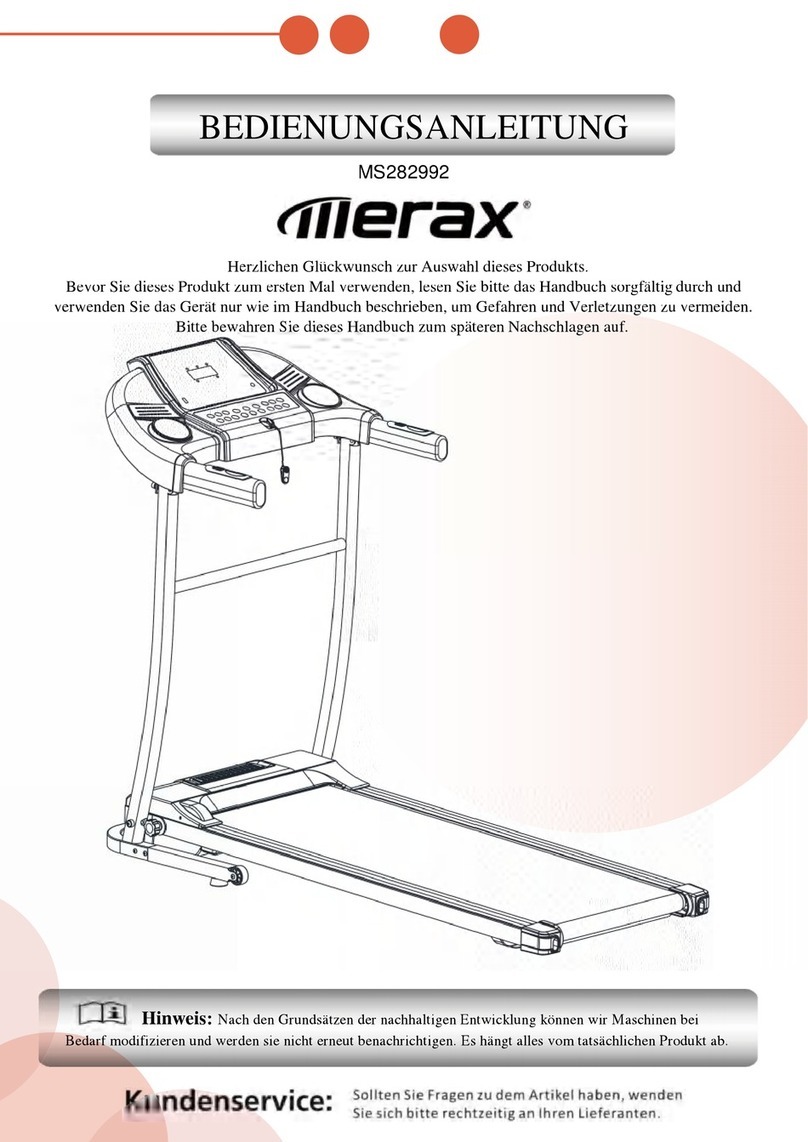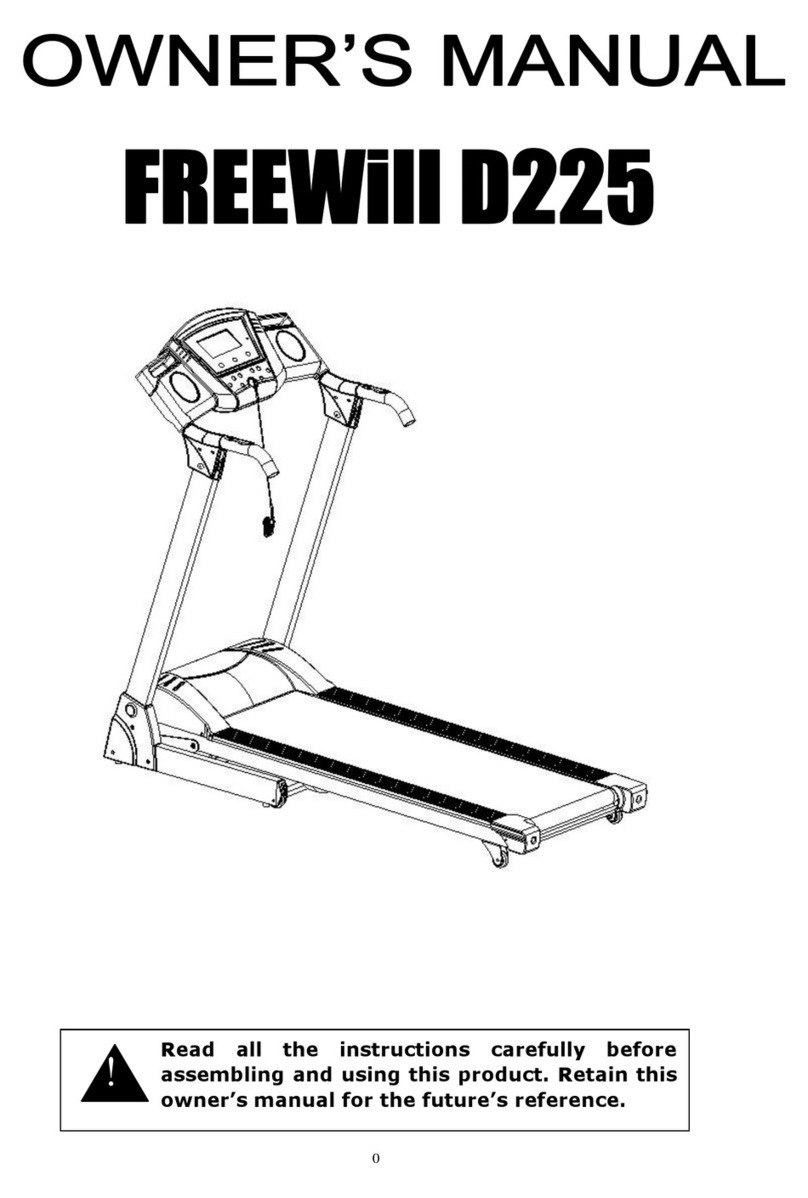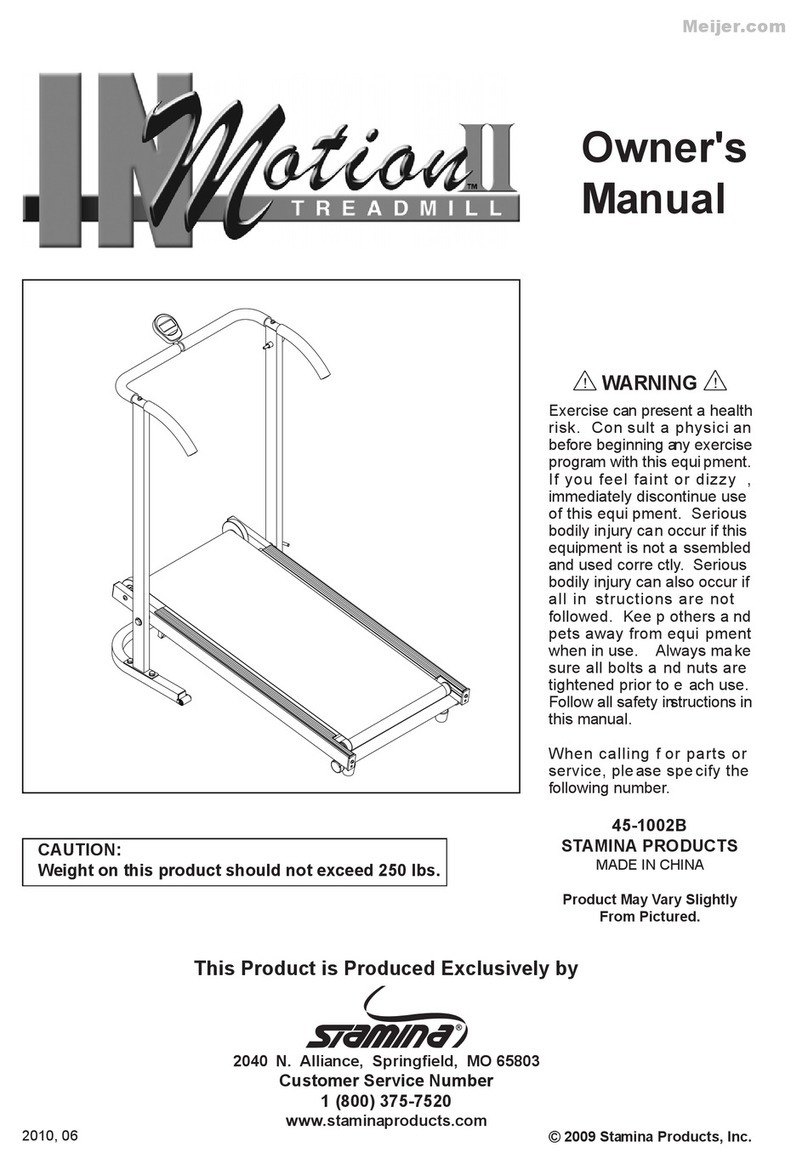
Troubleshooting
Tools . . . . . . . . . . . . . . . . . . . . . . . . . . . . 3-1
ElectricalProblems.....................3-2
ElectronicProblems.....................3-3
Error Codes . . . . . . . . . . . . . . . . . . . . . . . 3-3
ServiceMode......................3-5
FirmwareRevision ...................3-5
ControllerKeys.....................3-5
Dislays ........................3-6
Tri-colorDislay ....................3-6
S eed/Grade (O en-Loo Mode) . . . . . . . . . . . . 3-6
HR ClubTrack Plus
™
LCDDislayTest.........3-7
TestingPinSignals...................3-7
HeartRateMonitoringOtion ...............3-8
TestingHeartRateAccuracy ..............3-9
MechanicalProblems....................3-9
WalkBelt........................3-9
DriveBelt....................... 3-10
TreadmillNoise.................... 3-10
FlowCharts........................ 3-10
Repair/Replacement and Calibration
Cautions/Warnings.....................4-1
Tools . . . . . . . . . . . . . . . . . . . . . . . . . . . . 4-2
FieldFunctionalTests ...................4-3
RemovingTreadmillHood .................4-3
Re lacing the Configuration Plate . . . . . . . . . . . . . 4-6
RelacingthePowerCord..................4-7
Re lacing the VSD Board/Card Cage Assembly . . . . . . . 4-7
RelacingtheTensioner ..................4-9
RelacingthePoly-VDriveBelt.............. 4-10
Installing the Front Shaft . . . . . . . . . . . . . . . 4-11
RelacingtheDriveMotor ................ 4-11
RelacingtheTransformer................ 4-13
RelacingtheGradeMotor................ 4-14
RelacingtheGradeMotorChain............. 4-15
Re lacing the Grade Potentiometer (POT) . . . . . . . . 4-16
GradePotWires ................... 4-16
RemovingtheRackGears ................ 4-17
ReassemblingtheRackGears .............. 4-18
RelacingaJammedRackGear.............. 4-19
RelacingthePinionShaft................ 4-21
AdjustingtheGradeLimitSwitches ........... 4-22
WalkDeckAssembly................... 4-23
Contents - vi

